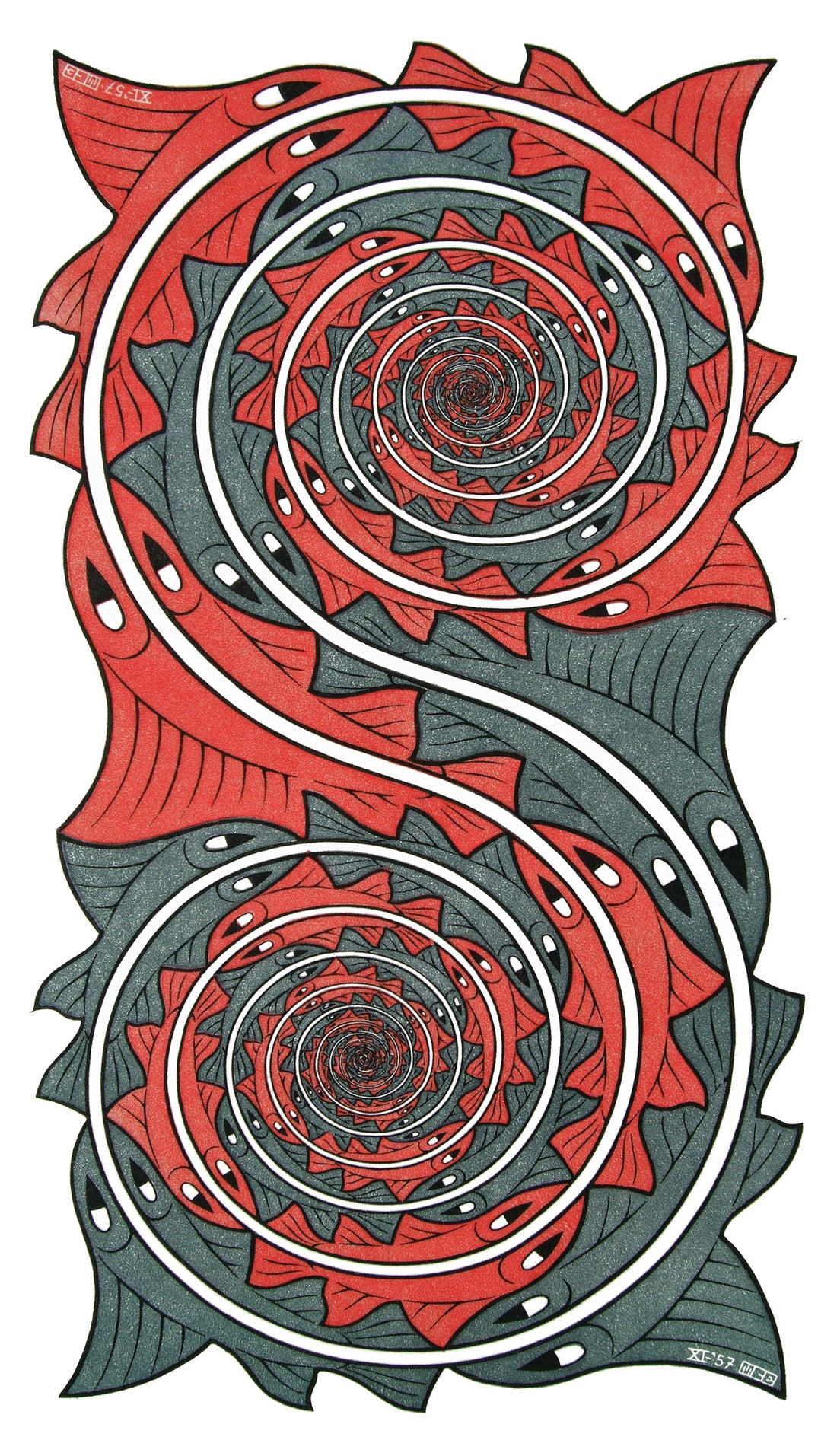M.C. Escher is renowned for his mathematically inspired artwork, which combines intricate patterns, impossible geometries, and visual paradoxes. His works are famous for their imaginative and mind-bending depictions, often challenging the viewer’s perception of reality.
Some highlights of his legacy include:
1. Tessellations: Escher was a master of creating interlocking patterns that cover a plane without gaps or overlaps. These designs often feature animals, birds, and other forms.
2. Impossible Structures: He is best known for depictions of architectures that defy the rules of perspective, such as Relativity (1953), which features multiple, conflicting gravitational orientations, and Ascending and Descending (1960), showing an endless staircase.
3. Visual Illusions: Many of his works play with optical illusions, such as Drawing Hands (1948), where two hands are depicted drawing each other into existence.
4. Mathematical Inspiration: Escher’s work is deeply rooted in geometry, symmetry, and the concepts of infinity, making him popular among mathematicians and scientists.
His unique ability to blend art and math has left a lasting impact, and his works continue to captivate audiences worldwide.
